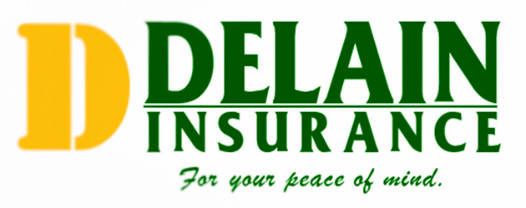6 Types of Home Insurance Coverage Explained
By Dave Delain | June 25, 2025
Understanding home insurance can be daunting given the array of options available. Each type of coverage is designed to protect against different risks and perils that your home may face. Whether you are a new homeowner or reviewing your existing policy, knowing the specifics of various home insurance coverages can help you make informed decisions. This article will explore several types of home insurance coverages, giving you a clearer picture of what each type entails and why it might be necessary for your peace of mind.
1. Dwelling Coverage
Dwelling coverage forms the foundational pillar of any robust homeowner's insurance policy, acting as the primary safeguard for the physical structure of your residence. This crucial component extends protection to the very bones of your home, encompassing the walls, the roof, and any permanently installed fixtures or built-in appliances, such as water heaters or central air conditioning units. It is designed to mitigate the financial impact of damage caused by a broad spectrum of perils, including common occurrences like fire, windstorms, hail, lightning, and vandalism.
In the unfortunate event that your house sustains damage or requires extensive rebuilding due to a covered peril, dwelling coverage steps in to help absorb the often-prohibitive costs. This can include expenses for demolition, debris removal, the acquisition of new building materials, and the labor required for reconstruction. Without this vital form of coverage, homeowners could be exposed to crippling financial burdens, potentially forcing them to shoulder the entire expense of repairing or rebuilding their homes out-of-pocket. Such an outlay could easily deplete savings, necessitate loans, or even lead to financial ruin.
2. Personal Property Coverage
Personal property coverage protects the contents inside your home, such as furniture, electronics, and clothing. If your possessions are stolen or destroyed by an insured event, this coverage can reimburse you for the loss. This type of home insurance is crucial for anyone who wants to safeguard their personal belongings from damage or theft. It's important to conduct a detailed inventory of personal property to ensure that your coverage limits are sufficient to cover the replacement cost of all your belongings. Some policies offer replacement cost coverage, which reimburses the full value of new items, while others offer actual cash value, which may factor in depreciation.
3. Liability Protection
Liability protection is a critical component of homeowners' insurance that protects you against legal responsibility for injuries or property damage caused to others. If a guest injures themselves on your property, liability insurance can cover legal expenses and possible settlements. This coverage is important because it provides financial protection and peace of mind in the event of unforeseen accidents. All homeowners should consider whether their liability coverage limits are adequate to protect their assets. Given the potential costs associated with legal claims, many policyholders opt for additional umbrella policies for enhanced protection.
4. Additional Living Expenses Coverage
Additional Living Expenses (ALE) coverage in your homeowner's insurance policy acts as a crucial safety net when your home becomes uninhabitable due to a covered peril. It covers increased living costs during temporary relocation, helping you maintain your standard of living.
ALE typically covers temporary housing such as hotels, rentals, or extended-stay accommodations. It also covers increased dining or grocery costs due to an inability to cook at home, additional commuting, public transport, or car rental fees. Duplicate utility bills or laundry services, storage costs for belongings during repairs, and other necessary expenses like pet boarding, childcare, or parking fees are also usually included. The goal of ALE is to maintain your pre-loss standard of living.
However, ALE has limits, including a maximum dollar amount, often a percentage of dwelling coverage. There is also a duration limit or coverage until repairs are complete. Your standard homeowner's deductible applies to the overall claim. ALE covers only "necessary" and "additional" expenses, not normal mortgage, taxes, or luxury items. Insurers cover only reasonable and customary costs for your area.
Given that about one in 425 insured homes experiences fire and lightning claims alone, according to the Insurance Information Institute, sufficient ALE coverage is vital to prevent financial strain during displacement. It provides peace of mind, allowing you to focus on home recovery. Reviewing your policy's ALE provisions is essential for preparing for unforeseen challenges.
5. Flood and Earthquake Coverage
Standard home insurance excludes flood and earthquake damage, requiring separate specialized policies. These are crucial for homeowners, especially in high-risk zones.
Flood insurance covers direct physical loss from water inundation, including structural and content damage, plus living expenses. It's often mandated in high-risk flood zones, but floods can occur anywhere.
Earthquake insurance protects against structural damage from seismic activity, including foundations, walls, and personal belongings. It's vital in earthquake-prone areas, as standard policies exclude earthquake movement. Policies cover repairs, contents, and living expenses, often with a percentage-based deductible.
Evaluate regional flood risk using FEMA maps and earthquake risk via geological surveys. Weigh costs against potential financial ruin from uninsured disaster damage. These specialized policies are essential investments for protecting your home and financial stability.
6. Loss of Use Insurance
Loss of use insurance, while often discussed in conjunction with Additional Living Expenses (ALE) for homeowners, holds a distinct and vital role for landlords. Specifically, it acts as a financial safety net designed to replace the rental income that a property owner would lose if their leased home or apartment becomes uninhabitable due to a covered peril. This makes it an essential form of coverage for anyone who relies on rental properties for income.
Imagine a scenario where a fire, a severe storm, or another insurable event renders a rental unit unlivable. Without loss of use insurance, the landlord would face a significant financial blow: not only the cost of repairs to the damaged property, but also the complete cessation of rental income for the duration of those repairs. This dual impact can create substantial revenue gaps and financial strain.
Loss of use insurance steps in precisely at this critical juncture. It provides compensation for the lost rent, ensuring that the landlord's cash flow remains stable even when their property is generating no income. This compensation typically covers the period the property is undergoing repairs and restoration, up to the policy's limits. For landlords, this financial safeguard is not merely a convenience; it's a critical component of prudent financial planning and comprehensive risk management.
Home insurance is a multifaceted safety net that provides critical protection across various aspects of homeownership. From safeguarding the physical structure of your home to ensuring the security of your personal belongings and protecting against liability claims, each coverage type plays a unique role in reducing risk. As you consider your current or future home insurance policy, thorough knowledge of the available types of coverage can empower you to choose a policy that fits your specific needs. Remember, an adequately protected home is not just a financial decision but a lasting investment in well-being and peace of mind. Knowing what coverage you need for your home insurance doesn’t have to be complicated. Our team at Delain Insurance Agency is here to help you choose what coverage is best for your specific circumstances. Contact us today to get started on finding the proper coverage for your home!





Share On: